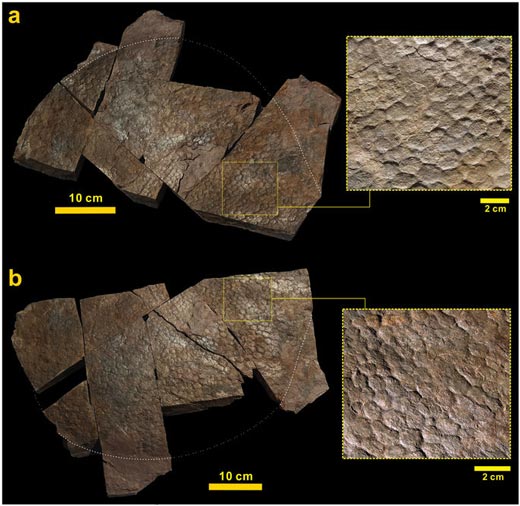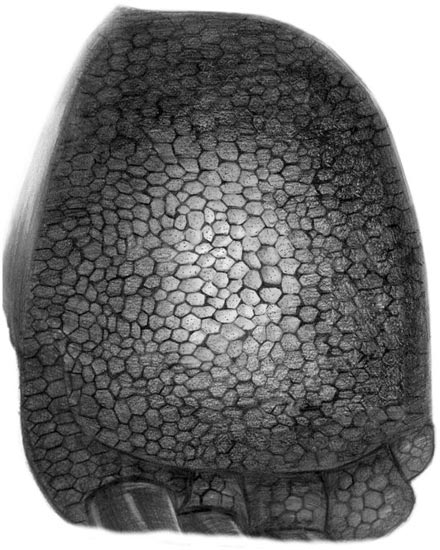Sauropod Feet Had Plenty of Traction According to New Study
Sauropod Print from South Korea Reveals Polygonal Scales
A team of scientists based in South Korea have published a paper in the academic journal “Nature” that reports on the discovery of a sauropod dinosaur footprint that has preserved the impression of the underside of the foot. The polygon-shaped scales on the underside of the long-necked dinosaur’s feet (plantar surface), would have provided grip and traction, helping these large creatures to traverse soft mud and slippery ground.
Sauropod Foot Impression Fossil (South Korea)

Picture credit: Nature
Largest Sauropod Print with Underside Surface Preserved
The very distinctive foot impression and its cast, reported upon in this study, represent the largest known sauropod footprint with skin details found to date. The single print measures more than fifty centimetres across. The footprint impression was left in silty mudstone as a large sauropod crossed a mudflat in the late Early Cretaceous (Albian faunal stage of the Early Cretaceous).
The researchers from Pukyong National University, Busan (South Korea) and Seoul National University (Seoul), describe a single footprint from the Lower Cretaceous Haman Formation discovered in south-eastern South Korea, they suggest that the floodplain sediments were formed by sheetflood processes, where shallow water moves relatively slowly across slightly sloping ground. The palaeoenvironment is interpreted as being a semi-arid area with lakes and ponds which was occasionally subjected to wetter weather, resulting in some flooding.
Microbial mats formed across the low-lying ground, adjacent to the water sources and the presence of these microbial mats may have helped with the preservation of the foot details.
A Reconstruction of the Sauropod Foot (Underside)

Picture credit: Hyun Jeong Yoo
The researchers conclude that some sauropods by the late Early Cretaceous had a well-developed polygonal skin texture covering nearly the whole of their foot pads. This foot pattern is reminiscent to that found on the pads of extant elephants. These scales would have helped increase stability when these large and heavy animals crossed wet ground.
Visit the Everything Dinosaur website: Everything Dinosaur.

